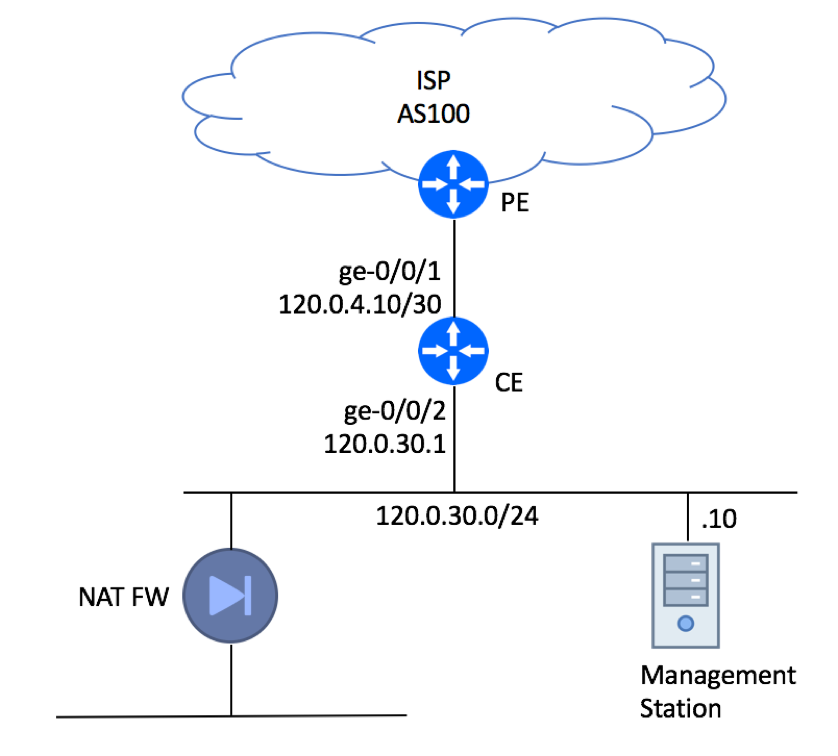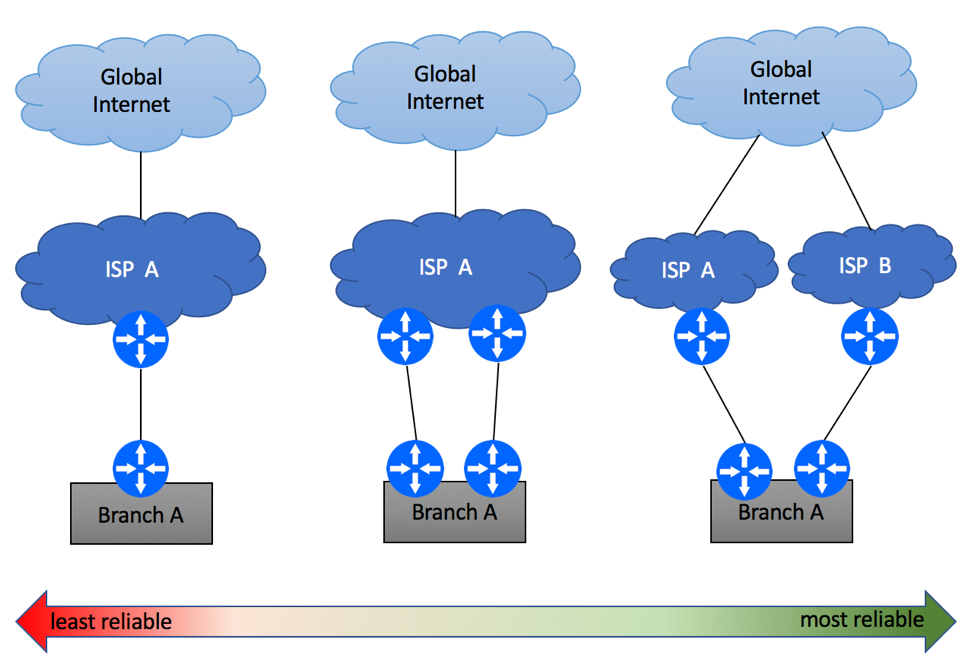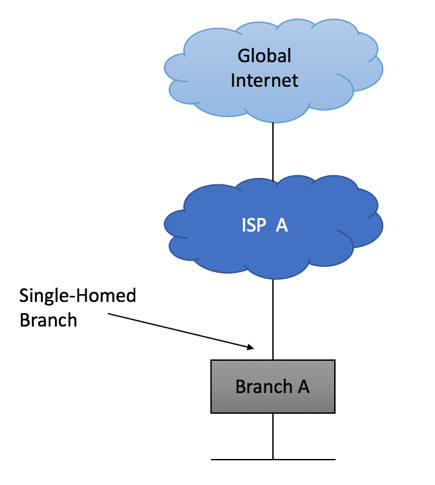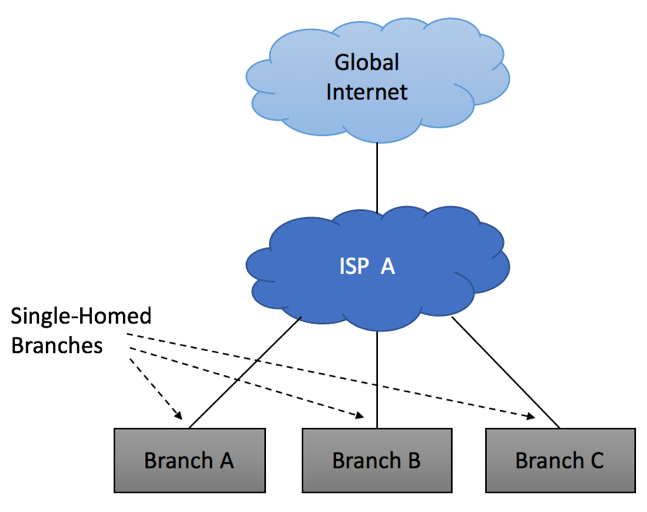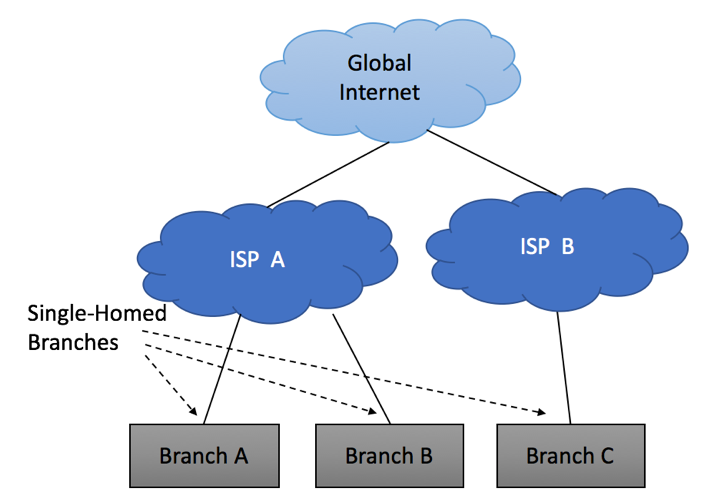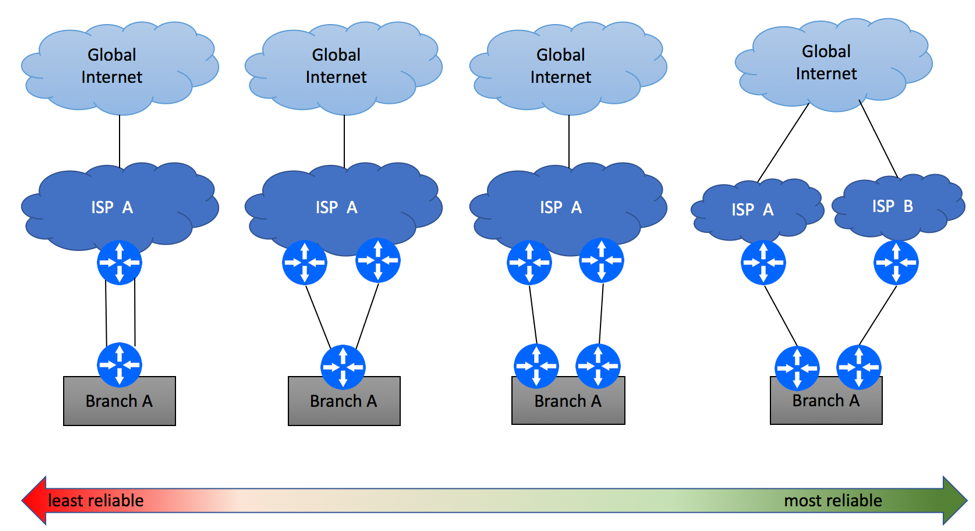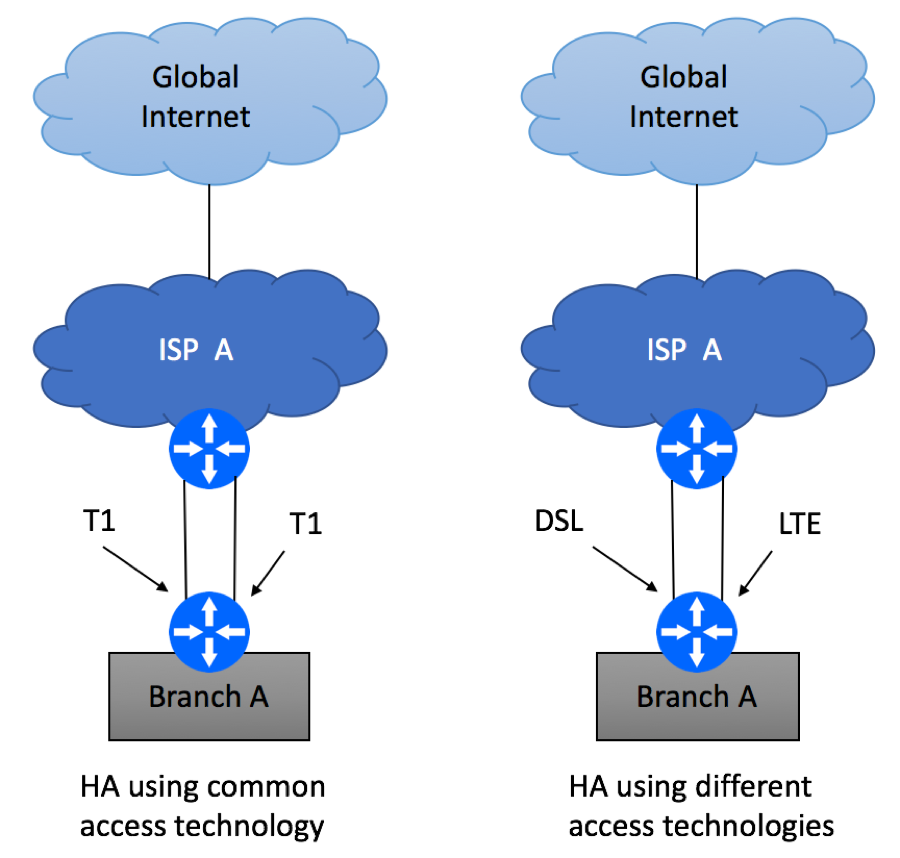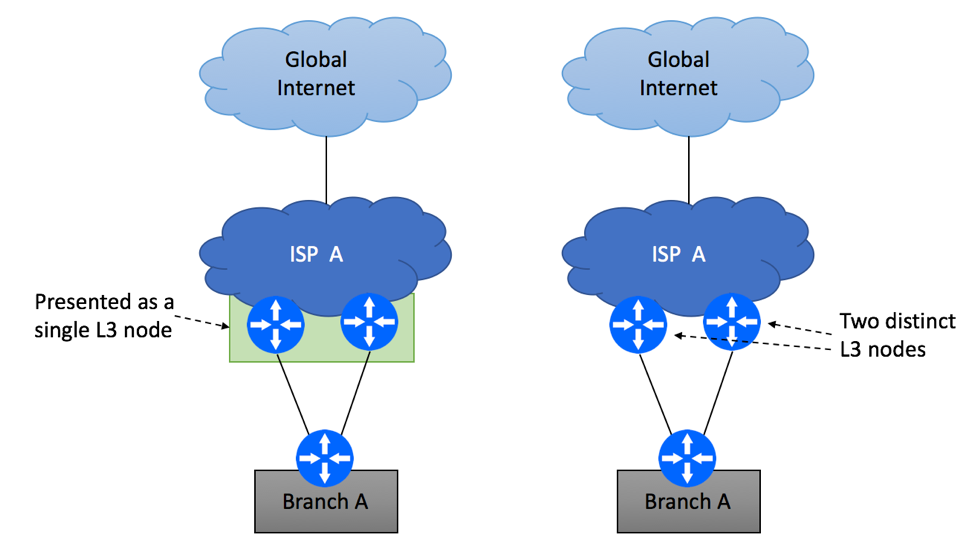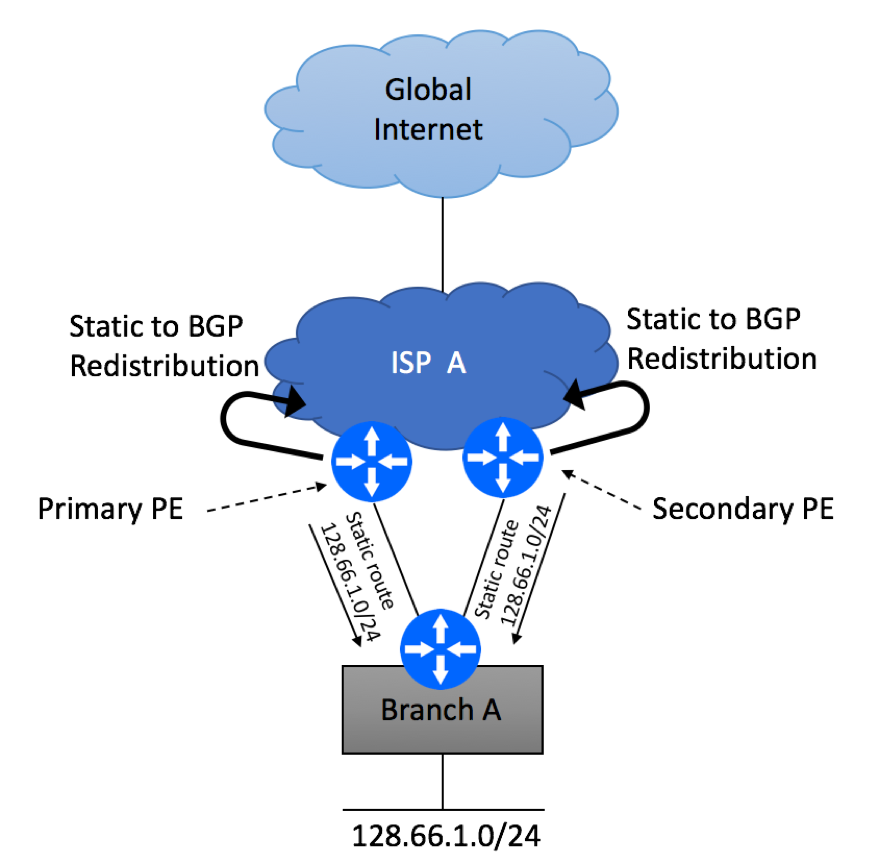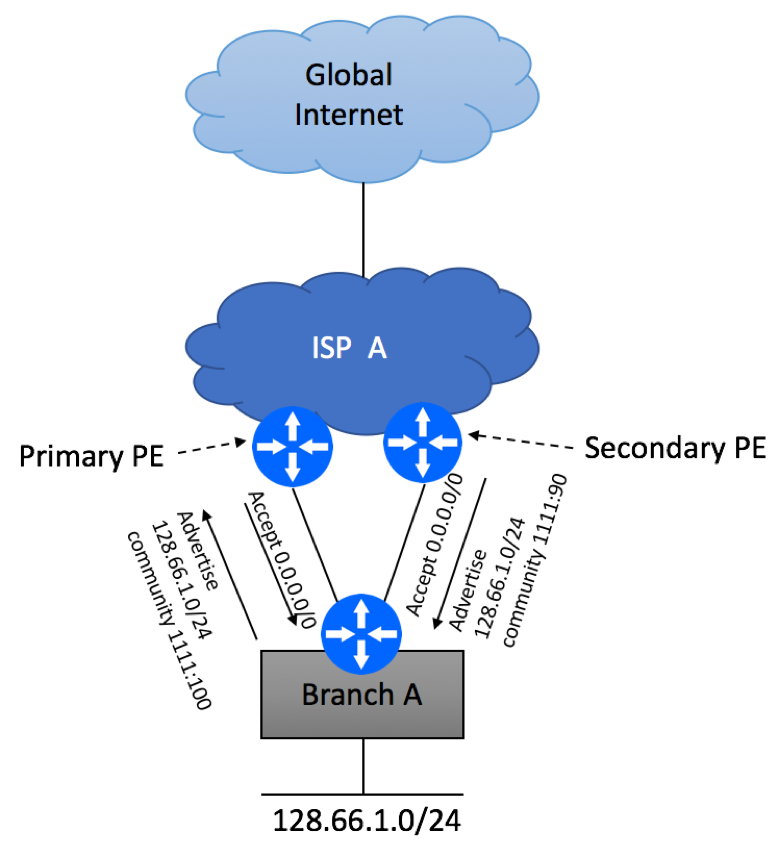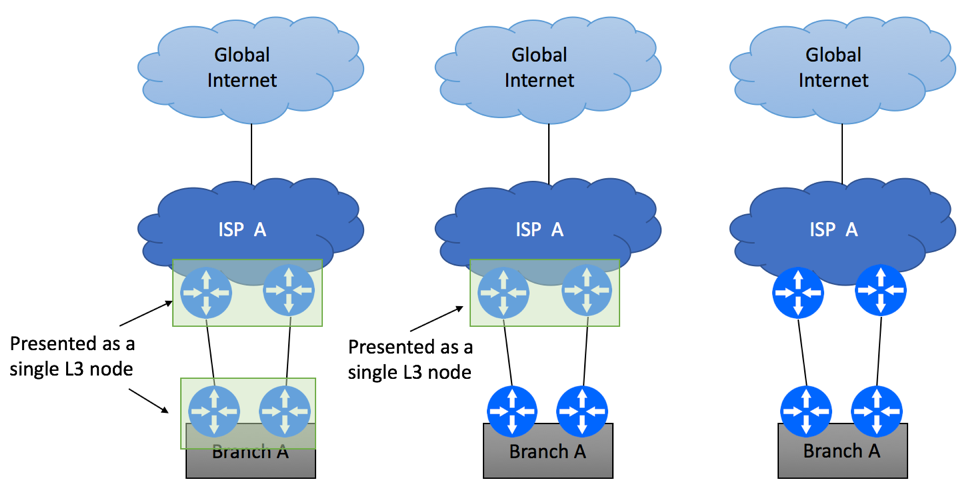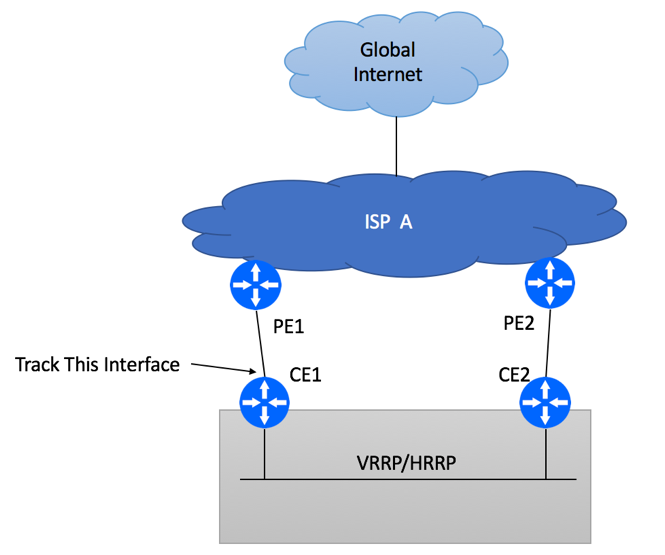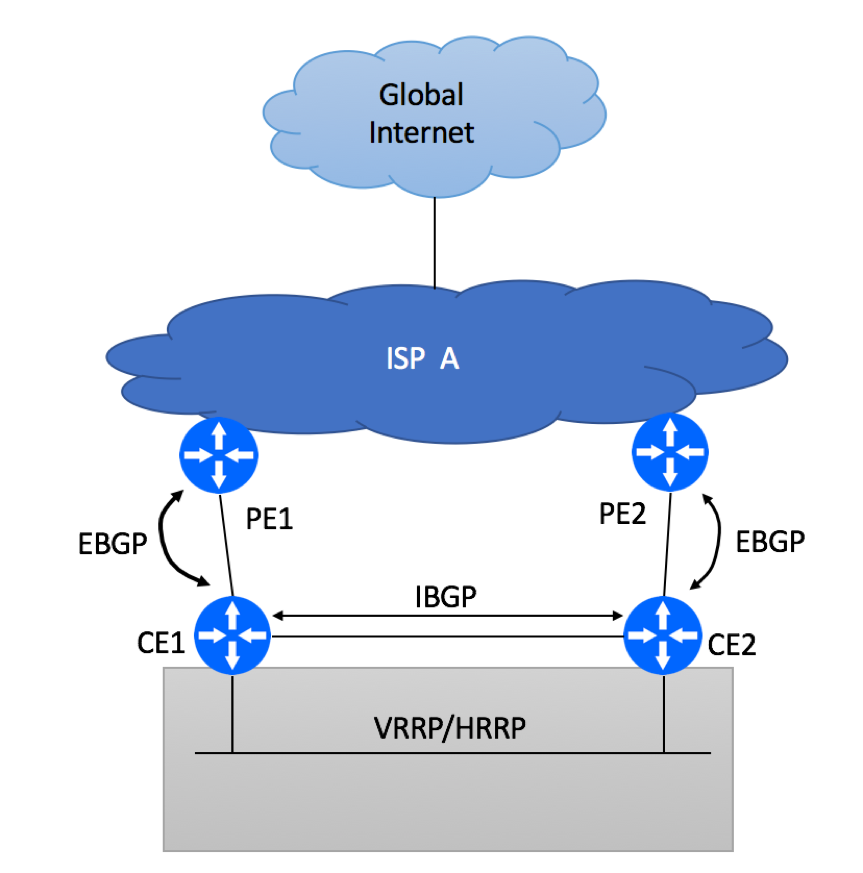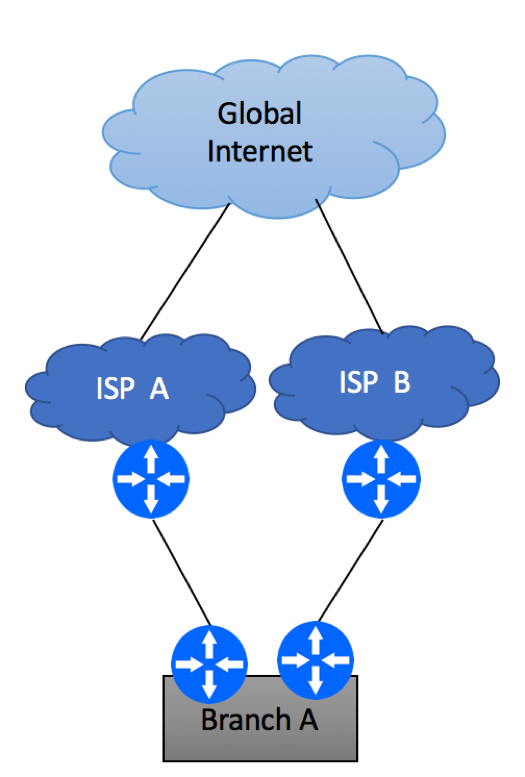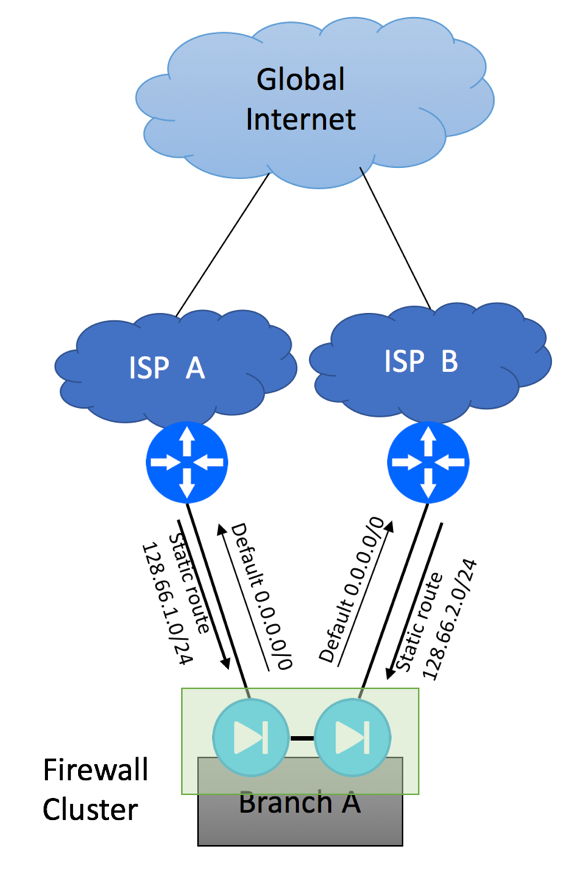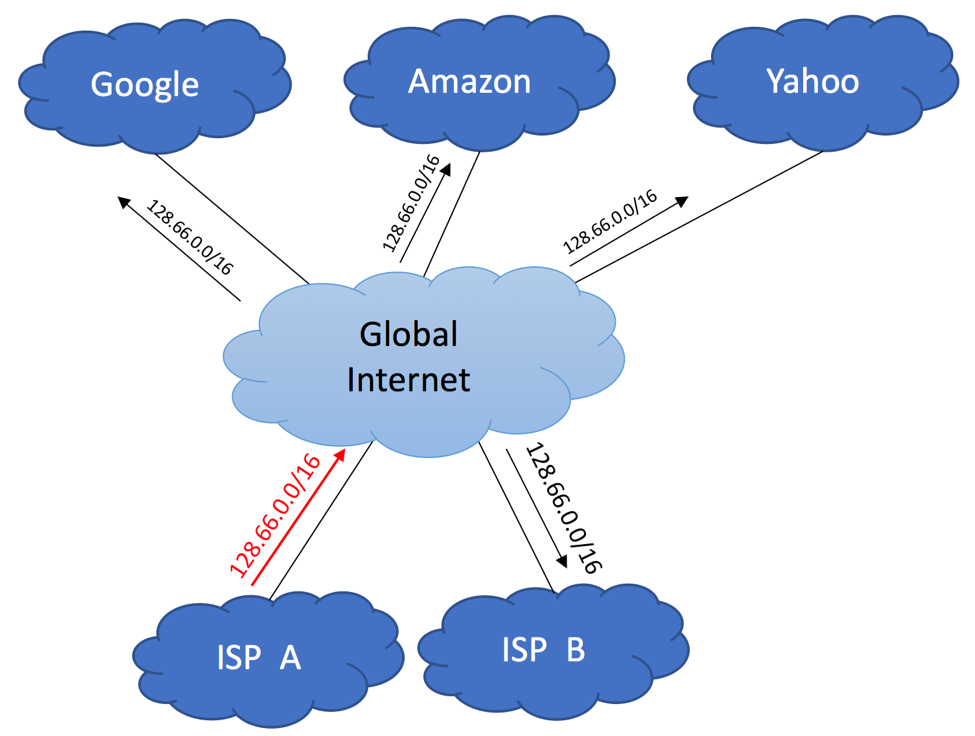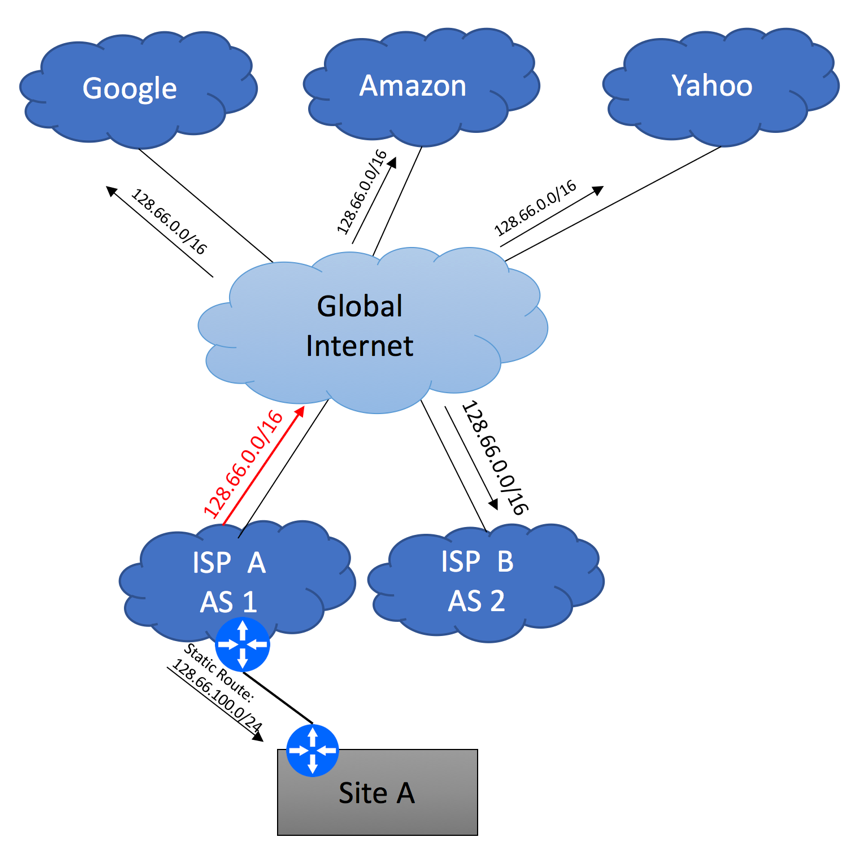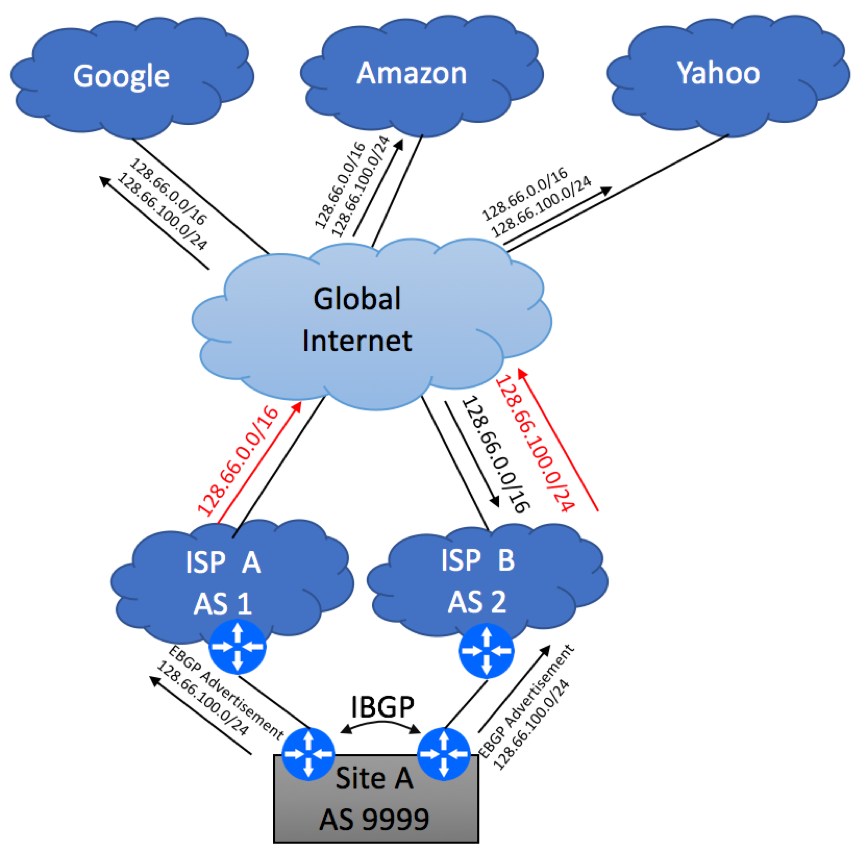Introduction
In this example, we will show recommended configuration for a Single-homed Single CE device using private AS with an upstream ISP. It is assumed that management of this device will be performed from a dedicated server residing within Customer’s Network.
This type of setup is quite common in an environment where a dedicated firewall performing source NAT function is setup to protect customer infrastructure.
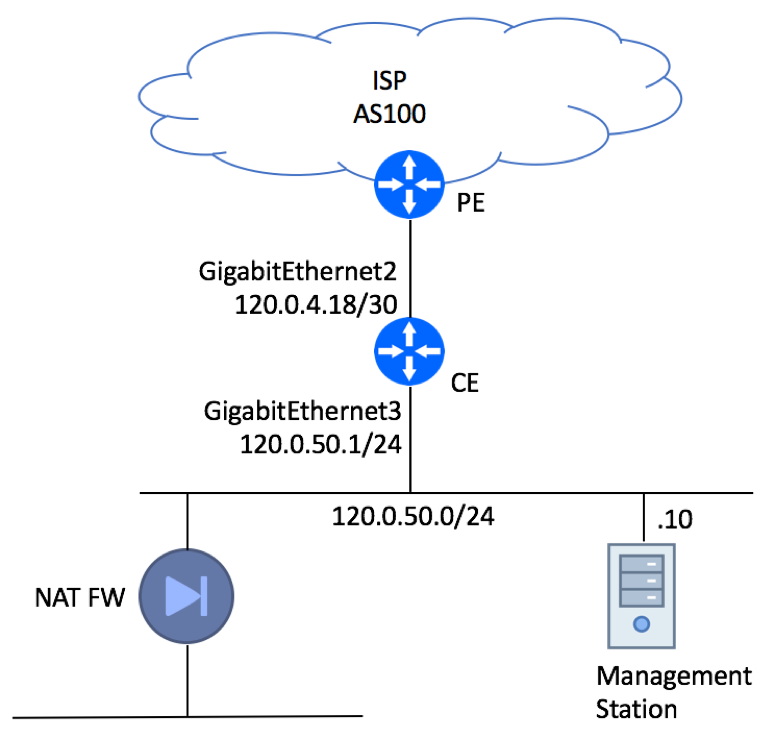
Please note, that the Management Station is connected directly to the LAN interface for illustration purpose only. In real production deployments, Management Station must be protected by a firewall.
BGP Configuration
BGP configuration can be split in the following tasks:
- Accept the default route from the ISP while discarding all other advertisements that might be sent to your CE
- Advertise your subnet (120.0.50.0/24) while making sure that no other routers are erroneously injected
- Secure BGP session by configuring a MD5 key
The actual configuration is comprised of the following blocks:
- Configure Two prefix lists – one with the subnet you’ll advertise upstream and the other one with the default route you’ll be receiving from your ISP:
ip prefix-list default-only seq 10 permit 0.0.0.0/0 ip prefix-list originated-out seq 10 permit 120.0.50.0/24
- Configure BGP session with prefix-filtering and MD5 session protection
router bgp 111100 bgp log-neighbor-changes network 120.0.50.0 mask 255.255.255.0 neighbor 120.0.4.17 remote-as 100 neighbor 120.0.4.17 description PE2 neighbor 120.0.4.17 password 7 14141B180F0B neighbor 120.0.4.17 soft-reconfiguration inbound neighbor 120.0.4.17 prefix-list default-only in neighbor 120.0.4.17 prefix-list originated-out out !
Securing the Router
Next step is to secure the router itself. But default, it will pass any traffic (with some exceptions, not covered in this article) and accept connections from anywhere on the Internet. Your job is to make sure that only trusted sources can communicate with your device (control plane protection) and spoofed traffic is not allowed in and out of your network (data plane protection).
Data Plane Protection
- Configure access-list to block spoofed traffic originated on the Internet:
ip access-list extended martians deny ip host 255.255.255.255 any deny ip 0.0.0.0 0.255.255.255 any deny ip 127.0.0.0 0.255.255.255 any deny ip 10.0.0.0 0.255.255.255 any deny ip 172.16.0.0 0.15.255.255 any deny ip 192.168.0.0 0.0.255.255 any deny ip 196.18.0.0 10.1.255.255 any deny ip 240.0.0.0 15.255.255.255 any deny ip 224.0.0.0 15.255.255.255 any deny ip 169.254.0.0 0.0.255.255 any deny ip 192.0.0.0 0.255.255.255 any deny ip 198.0.0.0 0.255.255.255 any deny ip 203.0.0.0 0.255.255.255 any deny ip 100.64.0.0 0.0.63.255 any ! ßLocal Traffic, should not be arriving from the Internet à deny ip 120.0.50.0 0.0.0.255 any permit ip any any
- Configure interface with security commands and uRPF on the LAN interface. Note that ‘no ip unreachables’ will block traceroute.
interface GigabitEthernet2 description 'CE5->PE2' ip address 120.0.4.18 255.255.255.252 no ip redirects no ip unreachables no ip proxy-arp ip access-group martians in negotiation auto ! interface GigabitEthernet3 description 'LAN Segment' ip address 120.0.50.1 255.255.255.0 no ip redirects no ip unreachables no ip proxy-arp ip verify unicast source reachable-via rx negotiation auto !
Control Plane Protection
- Configure Logging; Enable SSH and SNMP access-lists, disabled unnecessary services and protocols:
no ip http server no ip http secure-server ip route 192.168.74.0 255.255.255.0 192.168.3.18 ip ssh rsa keypair-name ssh-key ip ssh version 2 logging host 120.0.50.10 access-list 10 permit 120.0.50.10 snmp-server community t0ps3crrr3t RO 10 line vty 0 4 access-class 10 in exec-timeout 11 0 password d0ntt3ll login local transport input ssh !
- Configure Control Plane (CPP) Protection
! Routing Protocols (BGP) access-list 120 permit tcp any gt 1024 host 120.0.4.18 eq bgp access-list 120 permit tcp any eq bgp host 120.0.4.18 gt 1024 established ! Management Protocols (SSH, SNMP) access-list 121 permit tcp host 120.0.50.10 host 120.0.50.1 eq 22 access-list 121 permit tcp host 120.0.50.10 eq 22 host 120.0.50.1 established access-list 121 permit udp host 120.0.50.10 host 120.0.50.1 eq snmp ! Ping / Traceroute LAN Interface access-list 122 permit icmp any host 120.0.50.1 echo access-list 122 permit icmp any host 120.0.50.1 echo-reply access-list 122 permit icmp any host 120.0.50.1 ttl-exceeded access-list 122 permit icmp any host 120.0.50.1 packet-too-big access-list 122 permit icmp any host 120.0.50.1 port-unreachable access-list 122 permit icmp any host 120.0.50.1 unreachable ! Ping/Traceroute WAN Interface access-list 122 permit icmp any host 120.0.4.18 echo access-list 122 permit icmp any host 120.0.4.18 echo-reply access-list 122 permit icmp any host 120.0.4.18 ttl-exceeded access-list 122 permit icmp any host 120.0.4.18 packet-too-big access-list 122 permit icmp any host 120.0.4.18 port-unreachable access-list 122 permit icmp any host 120.0.4.18 unreachable ! Undesired Traffic access-list 123 permit icmp any any fragments access-list 123 permit udp any any fragments access-list 123 permit tcp any any fragments access-list 123 permit ip any any fragments access-list 123 permit tcp any any eq bgp rst ! All Other Traffic access-list 124 permit tcp any any access-list 124 permit udp any any access-list 124 permit icmp any any access-list 124 permit ip any any ! ! Define Class-Maps class-map match-all Catch-All-IP match access-group 124 class-map match-all Management match access-group 121 class-map match-all Normal match access-group 122 class-map match-all Undesirable match access-group 123 class-map match-all Routing match access-group 120 ! ! Configure CoPP Policy policy-map RTR_CoPP class Undesirable police 8000 1500 1500 conform-action drop exceed-action drop class Routing police 100000 5000 5000 conform-action transmit exceed-action transmit class Management police 100000 20000 20000 conform-action transmit exceed-action drop class Normal police 50000 5000 5000 conform-action transmit exceed-action drop class Catch-All-IP police 50000 5000 5000 conform-action transmit exceed-action drop class class-default police 8000 1500 1500 conform-action transmit exceed-action drop ! Apply CoPP Policy control-plane service-policy input RTR_CoPP !
Complete Router Configuration
service timestamps debug datetime localtime show-timezone service timestamps log datetime localtime show-timezone service password-encryption! hostname CE11 ! boot-start-marker boot-end-marker ! ! enable secret 5 $1$9Ah6$7tFkcd/bJRrHSx0grfmYA1 ! no aaa new-model no ip source-route no ip domain lookup ! username cisco privilege 15 secret 5 $1$ZJAP$Hmq/nCv7qQcwPHyB4Ixdo0 ! ! class-map match-all Catch-All-IP match access-group 124 class-map match-all Management match access-group 121 class-map match-all Normal match access-group 122 class-map match-all Undesirable match access-group 123 class-map match-all Routing match access-group 120 ! policy-map RTR_CoPP class Undesirable police 8000 1500 1500 conform-action drop exceed-action drop class Routing police 100000 5000 5000 conform-action transmit exceed-action transmit class Management police 100000 20000 20000 conform-action transmit exceed-action drop class Normal police 50000 5000 5000 conform-action transmit exceed-action drop class Catch-All-IP police 50000 5000 5000 conform-action transmit exceed-action drop class class-default police 8000 1500 1500 conform-action transmit exceed-action drop ! ! interface GigabitEthernet1 description 'Out-of-Band Management' ip address 192.168.3.231 255.255.255.0 no ip redirects no ip unreachables no ip proxy-arp negotiation auto ! interface GigabitEthernet2 description 'CE5->PE2' ip address 120.0.4.18 255.255.255.252 no ip redirects no ip proxy-arp ip access-group martians in negotiation auto ! interface GigabitEthernet3 description 'LAN Segment' ip address 120.0.50.1 255.255.255.0 no ip redirects no ip unreachables no ip proxy-arp ip verify unicast source reachable-via rx negotiation auto ! router bgp 111100 bgp log-neighbor-changes network 120.0.50.0 mask 255.255.255.0 neighbor 120.0.4.17 remote-as 100 neighbor 120.0.4.17 description PE2 neighbor 120.0.4.17 password 7 14141B180F0B neighbor 120.0.4.17 soft-reconfiguration inbound neighbor 120.0.4.17 prefix-list default-only in neighbor 120.0.4.17 prefix-list originated-out out ! virtual-service csr_mgmt ! ip forward-protocol nd ! no ip http server no ip http secure-server ip route 192.168.74.0 255.255.255.0 192.168.3.18 ip ssh rsa keypair-name ssh-key ip ssh version 2 ! ip access-list extended martians deny ip host 255.255.255.255 any deny ip 0.0.0.0 0.255.255.255 any deny ip 127.0.0.0 0.255.255.255 any deny ip 10.0.0.0 0.255.255.255 any deny ip 172.16.0.0 0.15.255.255 any deny ip 192.168.0.0 0.0.255.255 any deny ip 196.18.0.0 10.1.255.255 any deny ip 240.0.0.0 15.255.255.255 any deny ip 224.0.0.0 15.255.255.255 any deny ip 169.254.0.0 0.0.255.255 any deny ip 192.0.0.0 0.255.255.255 any deny ip 198.0.0.0 0.255.255.255 any deny ip 203.0.0.0 0.255.255.255 any deny ip 100.64.0.0 0.0.63.255 any deny ip 120.0.50.0 0.0.0.255 any permit ip any any ! ! ip prefix-list default-only seq 10 permit 0.0.0.0/0 ! ip prefix-list originated-out seq 10 permit 120.0.50.0/24 logging host 120.0.50.10 access-list 10 permit 120.0.50.10 access-list 10 permit 192.168.0.0 0.0.255.255 access-list 120 permit tcp any gt 1024 host 120.0.4.18 eq bgp access-list 120 permit tcp any eq bgp host 120.0.4.18 gt 1024 established access-list 121 permit tcp host 120.0.50.10 host 120.0.50.1 eq 22 access-list 121 permit tcp host 120.0.50.10 eq 22 host 120.0.50.1 established access-list 121 permit udp host 120.0.50.10 host 120.0.50.1 eq snmp access-list 122 permit icmp any host 120.0.50.1 echo access-list 122 permit icmp any host 120.0.50.1 echo-reply access-list 122 permit icmp any host 120.0.50.1 ttl-exceeded access-list 122 permit icmp any host 120.0.50.1 packet-too-big access-list 122 permit icmp any host 120.0.50.1 port-unreachable access-list 122 permit icmp any host 120.0.50.1 unreachable access-list 122 permit icmp any host 120.0.4.18 echo access-list 122 permit icmp any host 120.0.4.18 echo-reply access-list 122 permit icmp any host 120.0.4.18 ttl-exceeded access-list 122 permit icmp any host 120.0.4.18 packet-too-big access-list 122 permit icmp any host 120.0.4.18 port-unreachable access-list 122 permit icmp any host 120.0.4.18 unreachable access-list 124 permit tcp any any access-list 124 permit udp any any access-list 124 permit icmp any any access-list 124 permit ip any any ! snmp-server community t0ps3crrr3t RO 10 ! ! control-plane service-policy input RTR_CoPP ! banner motd ^C Disconnect IMMEDIATELY if you are not an authorized user! ^C ! line con 0 exec-timeout 11 0 password d0ntt3ll stopbits 1 line vty 0 4 access-class 10 in exec-timeout 11 0 password d0ntt3ll login local transport input ssh ! ! end

